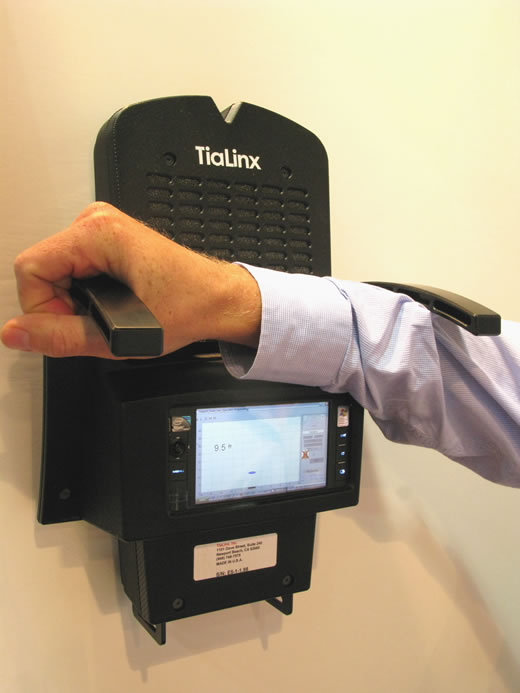

Two companies are demonstrating Ultra-Wide Band (UWB) radar systems providing through the wall sensing. Israel-based Camero is showing the Xaver 800 and 400 products and is unveiling a prototype design of the miniature hand-held Xaver 100, that fits into a soldier’s pouch. These systems can effectively detect the presence of people behind a wall, indicating their movements, relative positions and, in some systems, the distance to the target.
U.S. based TiaLinx Inc. has developed a different system, also utilizing a low-power UWB design. Actually, TiaLinx’ Eagle 5 family of radars can be used as ‘dual-use systems’ – for spotting and tracking targets behind walls, but due to its high sensitivity, the sensor can also detecting living people trapped under rubble, by spotting their breathing movements. The system can also detect underground cavities associated with weapon’s caches and IED emplacements inside walls.

The imager ‘illuminates’ the target area with rapid, wide-band high frequency (nano sec.)
pulses that penetrate glass, wood, concrete, dry wall and bricks. The pulses echoed from underground objects and ‘anomalies’ are processes to create a two-dimensional image of the target. The radar can detect objects buried 30 ft deep into the ground or covered by 20 cm concrete slabs.
TiaLinx offers two versions of the Eagle 5 – the Eagle 5P hand held RF imager for culvert and tunnel detection, and -5B model, designed for the detection of underground buried motion. Other models developed by the company are designed as hand held sensors, utilizing a helmet mounted display.
















